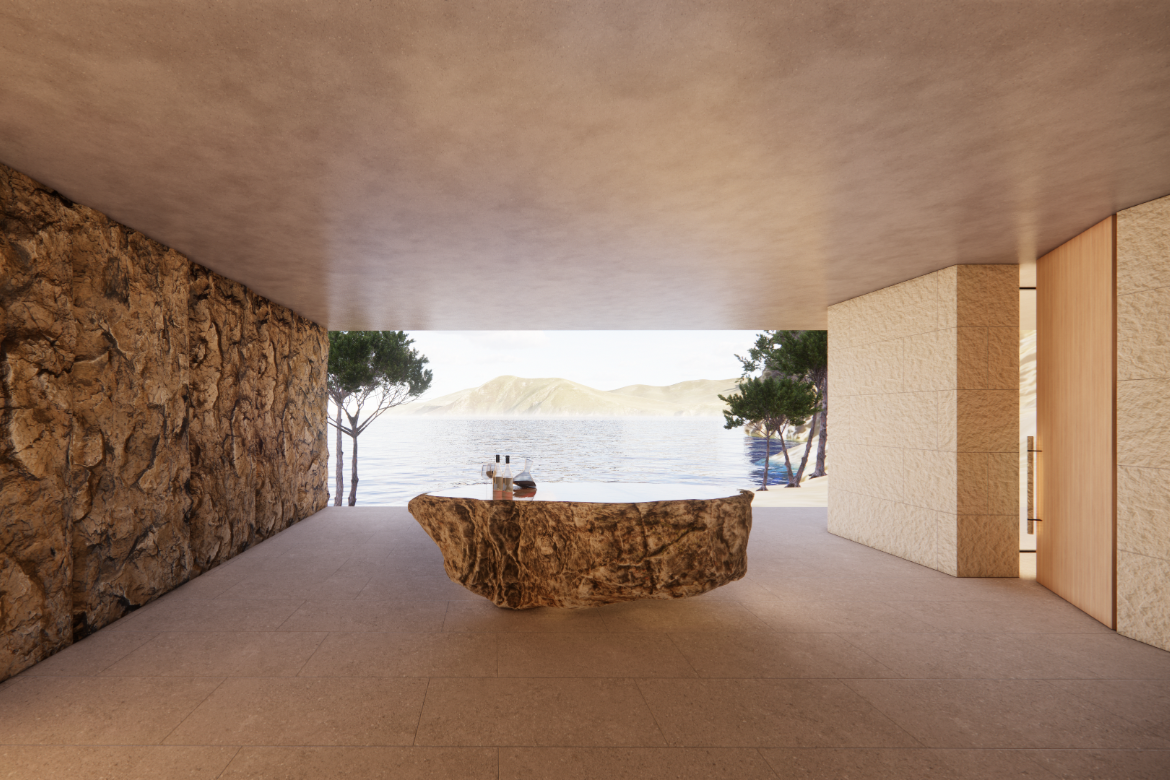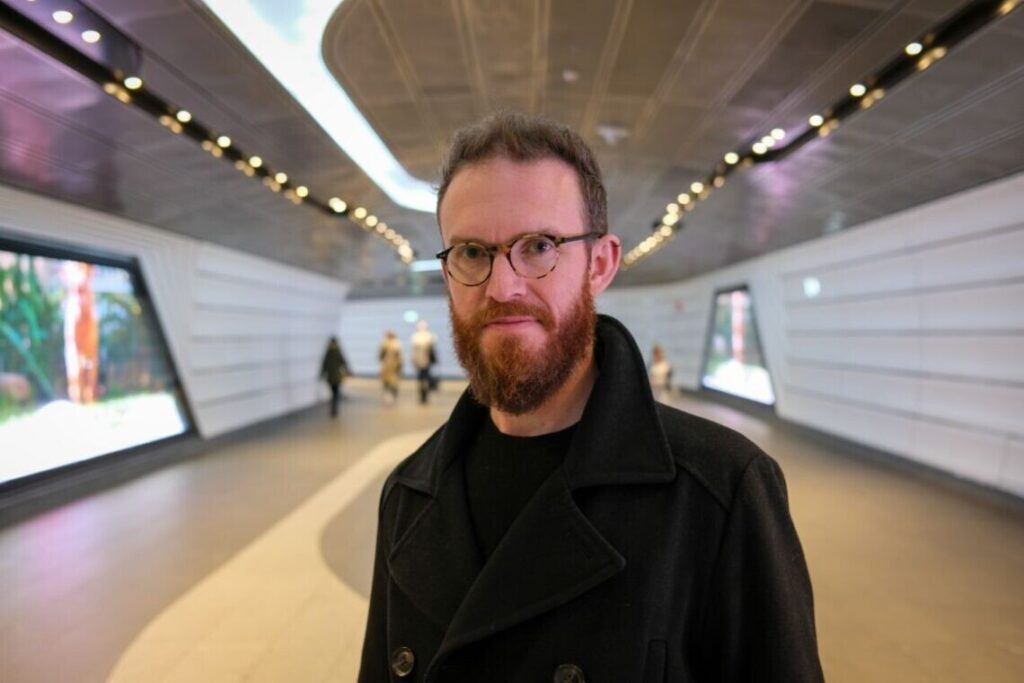Artifical Intelligence is the topic of the day in the design world. Whether it fills you with excitement, dread or something in between, it’s a crucial time to tackle the issues at hand with nuance and depth. Timothy Alouani-Roby met with Woods Bagot associate and tech advocate, Jet Geaghan, to discuss the second part here.

"AI will be instrumental in shaping the places & spaces of the future. The onus is on designers to engage in this movement so as to forge better outcomes for all."
June 14th, 2023
The first part of Jet’s Q&A can be found here.
TAR: New technologies do not appear in a vacuum, so how do you see AI developing in design within the context of the current political/economic/social norms?
JG: The output of popular interfaces like ChatGPT is vast and seemingly unmonitored. Extrapolating this invisible avalanche to the interior design and architecture disciplines, we could see an explosion of what I’d call ‘design spam’ – generic, derivative iterations, devoid of quality or benefit but perfectly calibrated to only maximise profit or fulfil some specific special interest. Many cities are already overpopulated by cookie-cutter planning and buildings that do not serve people or consider environmental impacts, so allowing this trend to be turbo-charged by AI unchecked could be catastrophic.
Thankfully, there are already moves underway to regulate AI to protect privacy, intellectual property and preserve truth and integrity. The conundrums are huge for AI developers and designers alike, so this tangle is not one we can rush – but it is certainly one we need to stay involved with.
The noisy advent of AI will quickly lose its novel sheen as uptake becomes customary and entrepreneurial enthusiasm collides with governance. If designers can remain focused on applying AI to the rigorous and transparent exploration of new ideas – more in the vein of research rather than reproduction – this new paradigm may open new frontiers of aesthetics, experience and global impact.

TAR: What kind of knowledge should architects and designers be seeking in relation to AI, e.g. what can we learn from other fields such as psychology?
JG: I have no doubt that within disciplines such as philosophy or neuroscience there are renewed debates swirling about the emergence of seemingly sentient non-human entities – these are conversations designers should engage with actively.
Handwringing aside, there is a need to come to terms with how best to train and communicate with machine learning systems. In the pursuit of new AI tools customised to assist design practice, such as those that can be developed with platforms such as LangChain, design jargon will need to be translated with a pedagogical open-mindedness.
Related: AI editorial on the future of design

This is not entirely dissimilar to adjusting guidance to coach an inexperienced trainee, or using simpler language to communicate complex expertise in lay terms. However, communicating with a common AI platform to achieve specific outcomes requires an approach closer to de-bugging than mentorship.
It may eventuate that AI knowledge in a particular field will eclipse that of an expert as it grows exponentially, like a protégé that never forgets a lesson. The question is how this knowledge is evaluated and directed; how data is synthesised into decision-making. The skills involved will remain critical to the design world.

TAR: AI will always be better than a human at gathering and processing data. Could it actually undermine the practice of some firms precisely because they are working formulaically?
JG: AI platforms are scraping data with daunting alacrity, likely continuing to cause headaches for their authors if concerns around privacy and plagiarism are not meaningfully addressed.
However, AI does not currently perform research as we understand it. It takes direction and digests what is put before it in order to complete tasks with examples. One explanation put to me recently was that, having born witness to billions of examples, it makes remarkably accurate guesses – at the pixels of an image described by a text prompt, for example, or a good response to few lines of chat in a certain style. So, the processing of data that has already taken place is indeed remarkable but the guidance and decision making in how the ‘generative’ side to new AI models is utilised lies with humans. Any new machine learning model is taught a syllabus that is of human design. AI is already better suited to performing repetitious tasks – from reading MRI scans to writing just about any pro forma. One would expect that design by formula will fall into the same category. Conversely, the task of checking designs for compliance with formulaic standards or regulations, easily handled by a machine learning model, might provide swift and uncomplicated assistance to those focused on design.
Woods Bagot
woodsbagot.com
Images
Courtesy of Jet Geaghan





We think you might also like this story on M&C Saatchi Group by Woods Bagot.
INDESIGN is on instagram
Follow @indesignlive
A searchable and comprehensive guide for specifying leading products and their suppliers
Keep up to date with the latest and greatest from our industry BFF's!

The Sub-Zero and Wolf Kitchen Design Contest is officially open. And the long-running competition offers Australian architects, designers and builders the chance to gain global recognition for the most technically resolved, performance-led kitchen projects.

A longstanding partnership turns a historic city into a hub for emerging talent

It’s widely accepted that nature – the original, most accomplished design blueprint – cannot be improved upon. But the exclusive Crypton Leather range proves that it can undoubtedly be enhanced, augmented and extended, signalling a new era of limitless organic materiality.

In this candid interview, the culinary mastermind behind Singapore’s Nouri and Appetite talks about food as an act of human connection that transcends borders and accolades, the crucial role of technology in preserving its unifying power, and finding a kindred spirit in Gaggenau’s reverence for tradition and relentless pursuit of innovation.

The Australian Institute of Landscape Architects (AILA) NSW Chapter has announced the winners of the 2025 NSW Landscape Architecture Awards.

Space Furniture has opened the world’s first standalone B&B Italia Outdoor showroom, a landmark space celebrating an enduring partnership of over 30 years with B&B Italia.
The internet never sleeps! Here's the stuff you might have missed

Space Furniture has opened the world’s first standalone B&B Italia Outdoor showroom, a landmark space celebrating an enduring partnership of over 30 years with B&B Italia.

As Kvadrat announces its full independence, Njusja de Gier shares some insight on her fascinating and rather unorthodox career path.